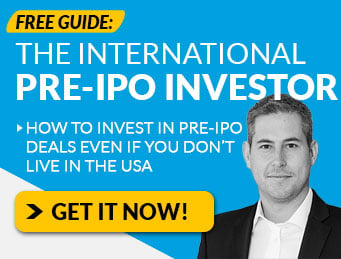In the pursuit of outsized returns, I’m always looking for a very specific setup: speculative investment opportunities that I think have mispriced risk factors.
Why? If we assume that the markets have already priced in all available information to the price of a stock (or broader sector), the only way to win is to be “contrarian and right.”
In my opinion, one of the single biggest mispriced risk factors is how mineral assets – like gold – are priced across the world’s major mining jurisdictions.
But most investors have little experience when it comes to understanding how mining companies work (and how the market tends to price these companies)…
And even fewer are able to handle the volatility that typically comes with investing in junior mining companies.
That’s what we’re going to talk about:
The $392 Billion Gold Mining Market
What makes gold mining different from other commodity producers?
How are mining companies valued?
Let’s dive in,
-Jake Hoffberg
P.S. We just launched our latest Regulation A+ offering for a gold royalty and streaming company.
As a reminder, securities sold under Reg CF, Reg A, and Reg D are often considered high risk, and speculative in nature. Please do not invest funds you cannot afford to lose, or otherwise need immediate access to.
The Big Idea
The $392 Billion Gold Mining Market
Gold mining is a global business with operations on every continent, except Antarctica. The yellow metal is extracted from mines of widely varying types and scale.
At a country level, China was the largest producer in the world in 2020, accounting for ~11% of total global production.

Source: World Gold Council
With growing geopolitical tensions in the Russia/Ukraine conflict – along with China’s near monopoly on rare earth minerals – there’s a growing possibility that global metals supply chains will go through a period of instability.
For this reason, we potentially could see new trading arrangements in North America; combined, the U.S., Canada, and Mexico produced ~461 tons in 2020, making it the world’s largest single block of gold producers.
Even though the U.S. has only a small fraction of global gold reserves, many investors are completely unaware of the risks hidden inside some of the largest gold mining companies in the world.
In today’s markets, mineral assets are valued at roughly the same multiple, regardless of where those assets are located.
This means an asset in Turkey is valued the same as a comparable asset in Ghana, which is valued the same as a comparable asset in the U.S.
However, simple logic reveals why this doesn’t make any sense; Why isn’t a domestically located mineral deposit valued higher than one in a hostile, foreign nation?
Now, with the recent conflict between Ukraine and Russia – and rising tensions between the U.S. and China – North American investors are recognizing the value of securing North American natural resources.
In our opinion, this means
The U.S., the world’s 4th largest gold producer (190.2 tonnes),
Canada, the world’s 5th largest gold producer (170.6 tonnes), and
Mexico, the world’s 9th largest gold producer (101.6 tonnes)…
…will potentially become a lot more attractive to North American investors.
In particular, the State of Nevada.
At the time of publishing, the single largest gold mine in the world is located in the State of Nevada.

In March 2019, after decades of fierce competition in Nevada, the two largest gold mining companies – Barrick and Newmont – shocked the gold industry when they announced the formation of a jointly owned company: Nevada Gold Mines.
The two companies combined most of their Nevada mines and water rights into a joint venture. It’s estimated the JV will produce $500 million in average annual pre-tax synergies in the first five years of operations. Over a 20-year period, the combination is projected to capture a total $5 billion pre-tax net present value.
(Note: there is no guarantee these estimates will actually be achieved and could be substantially less).
The Nevada complex is now the world’s single-largest gold producer, with an output of more than four million ounces in 2018, and an estimated 48 million ounces of reserves.
In 2019, many analysts and market participants heralded the Newmont-Goldcorp $9.3bn merger as the beginning of a new era of gold consolidation.
This sentiment has been amplified with the pending $17bn Newmont-Newcrest deal that would create a gold mining company with global reach that includes 23 mines in 10 countries.
If successful, it would represent one of the top 10 metals deals ever completed, and could potentially serve as a catalyst for continuing consolidation.

Gameboard
What makes gold mining different from other commodity producers?
There are core differences between gold mining and other resource extraction industries.
For example, petroleum reserves can often be accessed by drilling vertically – as well as horizontally in the case of fracking – and pumping it directly out of a hole in the ground.
However, mineral deposits – like gold – are not liquid or gas. Instead, the solid ore is found in “veins” that often travel diagonally through the earth.
For this reason, Pierre Lassonde – a founder of Franco-Nevada, the first gold royalty company – created his famed Lassonde Curve.
The Lassonde Curve models the life of a mining company – from exploration to production – and helps investors gauge market value through each stage of the process. This helps speculative investors understand the mining process, and how value is created.

The Lassonde Curve models the life of a mining company – from exploration to production – and helps investors gauge market value through each stage of the process
Beyond precious metals, the Lassonde Curve has become a staple across the mining industry, where mining tends to follow the same 7-step process.
Concept. At this point, the deposit isn’t much more than theory. Geologists work to test the theory, locating the deposit – if any. The area is surveyed, using geochemical and sampling technology. When confident the area might be mined profitably, they move to the next step.
Pre-Discovery. Here, speculative excitement can begin. Geologists coordinate test drilling to establish mineral potentials in the deposit area. The key method is taking below-ground cross-sections (drill core), and having them analyzed for mineral content. Drill cores with good mineral content can lead to further exploration, aimed at the discovery of a mineable deposit.
Discovery. When exploration reveals “enough” mineable minerals, new studies are produced to indicate if mining could be profitable. This changes the business model creating new challenges, such as profitability, construction, and financing.
Feasibility. Having demonstrated the deposit’s potential, investors then evaluate whether to advance the project. Speculators often pile in investments during this “orphan period” while uncertainties about the project remain, keeping more conservative investors away.
Development. A rare outcome, as most mineral deposits never make it this far. The next step is a production plan for the mine, including raising capital and building a team. Many risks still remain in the form of construction, budget, and timelines.
Startup/Production. An even rarer outcome for a mineral discovery. The company begins processing ore and generating revenue. Analysts continue to re-rate the deposit, seeking additional funds from institutional investors and the general public. Existing investors can choose to exit here or wait for potential increases in revenues and dividends.
Depletion. While a rare few mines last centuries, most are depleted in a matter of decades. As grade levels decline, operations wind down, and the remaining investors seek exits.
As projects are pushed slowly up the value chain through ongoing iterations, this means that:
Valuations can increase incrementally before building working mines.
Miners can make realistic exploration and drilling budgets.
Each one of these moments is an opportunity for investors to enter into one of these projects and attempt to capture returns.
Scoreboard
How Are Mining Companies Valued?
The main valuation methods used in the mining industry are:
Price to Net Asset Value (P/NAV)
Price to Cash Flow (P/CF)
Total Acquisition Cost (TAC)
EV/Resource ($/ounce)
P/NAV is the most important mining valuation metric, period.
Net asset value is the net present value (NPV) or discounted cash flow (DCF) value of all the future cash flow of the mining asset, [minus] any debt plus any cash.
The model can be forecast to the end of the mine life and discounted back today because the technical reports have a very detailed Life of Mine plan (LOM).
The formula is as follows: P/NAV = Market Capitalization / [NPV of all Mining Assets – Net Debt]
This means that the value of any mining company is based on the total P/NAV of all the assets it controls.
As Reserves and Resources are depleted, the value of the asset – along with its potential for future cash flows – decreases.

Source: Corporate Finance Institute
However, if the Reserves and Resources can be increased – either because more mineral deposits are discovered, or advances in technology/mineral prices make previously unrecoverable minerals feasible to mine – the value of the asset increases.
For investors, this presents an interesting opportunity to potentially acquire mining assets that are typically undervalued, relative to their peers in the industrial sector.
No miner is the same, but even those that have little coal exposure are greatly unloved by investors: they trade at half the valuation levels of other industrial companies, despite having a superior return on invested capital (ROIC), 35% higher dividends and generate one and a half times more free cash flow.
Even though the big global miners outperform the general market on just about every financial metric, the MSCI Metals and Mining Index has significantly underperformed for many years. It seems like there is always a stick to beat a miner with.
There is currently a disconnect between where metals prices are and how mining company share prices are trading, and I believe there are a few explanations.
First, the broader economy has seen such a bull market that investors continue to chase returns elsewhere.
Second, there is a lack of conviction among investors in the sustainability of these prices.
Third, there is a larger question of relevance from the perspective of investors seeking exposure to precious metals.
Based on a wide range of indicators, mining stocks do appear to be inexpensive; if our macroeconomic thesis regarding the importance of domestic mineral production is correct, we could see these historically undervalued assets appreciate in the coming years ahead.
A new way to capture the upside potential of junior gold miners with less risk?
For investors looking to capture potential gains inherent in the gold markets, junior mining companies arguably provide the highest potential rewards.
For 20 years, gold mining stocks have outperformed gold bullion during bull markets. Many see this as a leveraged play, as gold’s price rises.
Although gold miners may offer potential upside, they are also more volatile, with greater downside during dips.
They also come with extraordinary operational risk.
Not only do they have to bear the upfront cost of finding a workable mineral asset, they have to extract those minerals before they can generate revenue (let alone profit).

Source: Visual Capitalist
Because of this risk profile – along with a general dislike for mining companies in capital markets – there are limited financing opportunities for junior mining companies.
The end result? Junior miners can find themselves stuck between the proverbial “rock and a hard place” – they need money to develop the property, but they can’t get access to capital until the property is further developed.
But what if there was a way to take advantage of this problem and potentially get the downside protection of physical gold, the predictable cash flow of real estate, and the upside potential of junior mining stocks… but with less risk?











